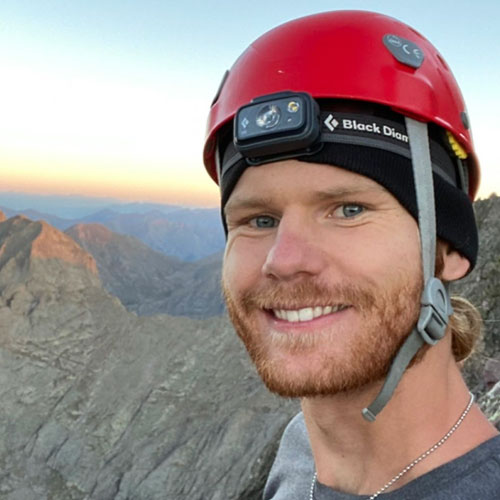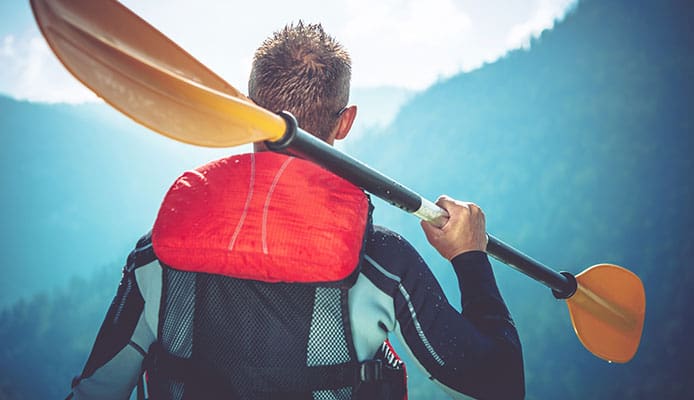
-
1.
-
2.
-
3.
-
4.
-
5.
We all love kayaking, it’s an activity which gives us so much pleasure. But during some parts of the year the water is simply too cold to go without additional protection. Wearing regular clothing isn’t very useful because it gets wet and then sticks to your body making you even colder. This is why you should invest in the best wetsuits for kayaking, so you can be warm and protected even in colder weather.
Wetsuits are specially designed clothing that is usually made from neoprene, which gives you insulation and needed warmth. However, there are some specifics when it comes to choosing the best wetsuit for kayaking. Your suit can be thicker or thinner, or you can choose to buy a suit with short sleeves and legs or a full suit.
We selected some great products for you in our wetsuit reviews, and you can be certain to find something you like. Also, don’t miss the buying guide below to learn more about the features you should look for when choosing the best wetsuit for kayaking.
Let’s get started.
OUR TOP PICK
O’Neill Men’s Reactor 3/2mm Back Zip Full
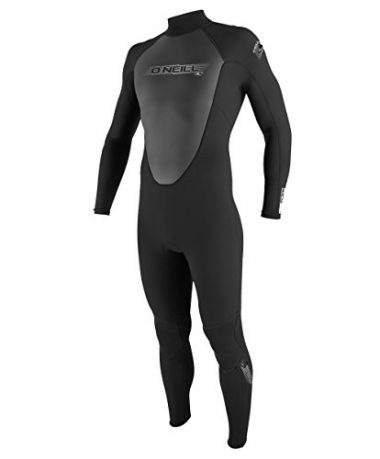
- Stand Out Features - Why We Love It
- Adjustable neck closure
- Knee pads
- Affordable
EDITORS CHOICE
Henderson Thermoprene Thick Shorty
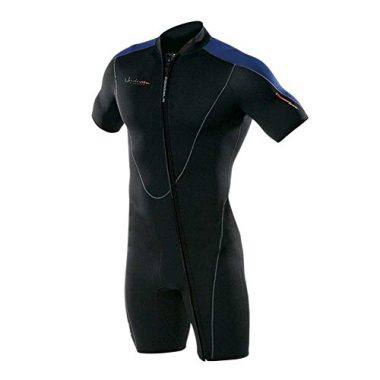
- Stand Out Features - Why We Love It
- Glued seams
- Ultra-stretchy Thermoprene
- Extra large sizes
BEST VALUE
NeoSport Men’s Premium Neoprene John
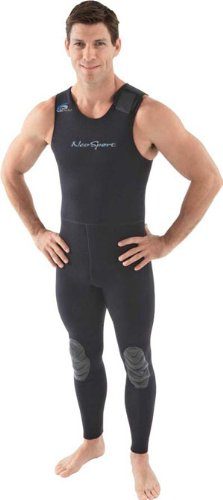
- Stand Out Features - Why We Love It
- Velcro shoulder straps
- Durable
- Comfortable
Sharkskin Men’s Chillproof Full
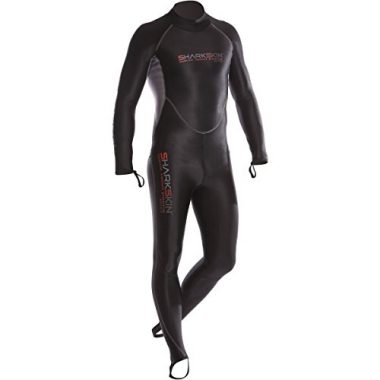
- Stand Out Features - Why We Love It
- Wind proof
- Comfortable
- Machine washable
- Adjustable neck closure
- Perfect for all water temperature
U.S. Divers Full Adult
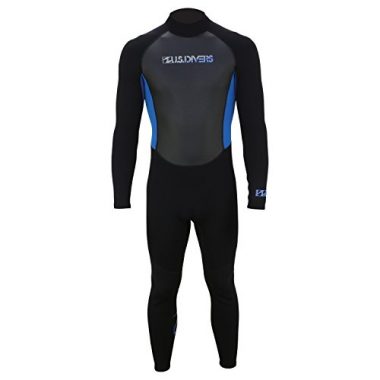
- Stand Out Features - Why We Love It
- Seals on wrists, ankles and neck
- Titanium lining for greater warmth
- Two year warranty
Lavacore Men’s Full Wetsuit
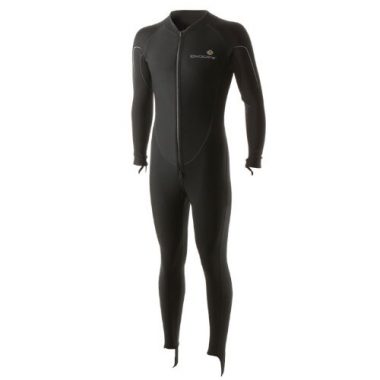
- Stand Out Features - Why We Love It
- Quick drying
- Antibacterial fleece lining
- Wind protection
- SPF 30+
NRS Farmer John
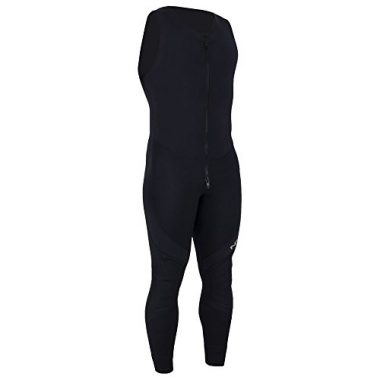
- Stand Out Features - Why We Love It
- Very warm
- Easy to put on
- High quality
Stohlquist Waterware Men’s Storm John

- Stand Out Features - Why We Love It
- Excellent range of movement
- Reinforced knees and seating
- Relief zipper
SUPreme Men’s Quantum Foam Neoprene
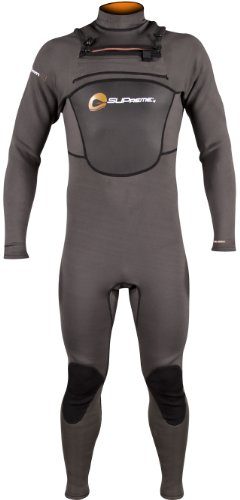
- Stand Out Features - Why We Love It
- Very comfortable
- Wind proof
- Thermal fleece interior
Kokatat NeoZip Long John Neoprene
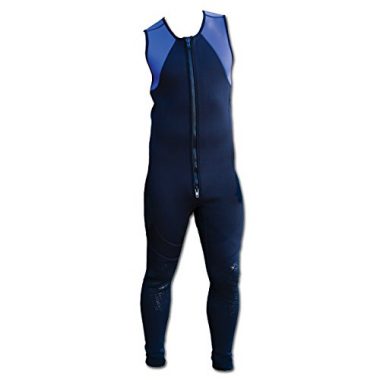
- Stand Out Features - Why We Love It
- Arm holes without seams
- Reinforced knees
- Dual opening zipper
How To Choose The Best Wetsuit For Kayaking – Buying Guide
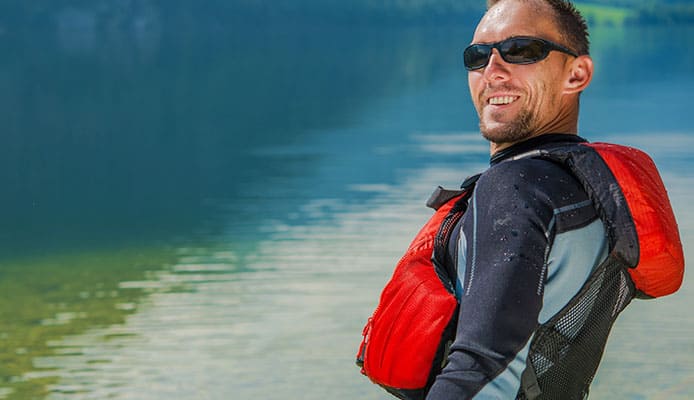
When you decide to buy the best kayaking wetsuit, you should get one that is going to be fully functional in the conditions you will find yourself in. You have to think about how cold it’s going to be – a suit with thicker neoprene is better for lower temperatures, especially if it has some additions or lining. This can save you from potentially dangerous situations like cold water shock or hypothermia. Also, since you intend to use it for kayaking adventures, it has to allow upper body movement.
Style
There are several different styles available, and which one you’ll choose depends on your preference and the conditions you’ll be using it in. A full wetsuit covers your entire body, including arms and legs down to the wrists and ankles. This is probably the best option for cold water, but this depends on the thickness of neoprene too.
Shorty style kayaking wetsuits cover the core of your body and only the upper parts of your arms and legs. There are also variations where you get full-length legs and short sleeve arms or long arms with short legs. This allows for greater movement and comfort but reduced warmth.
Sleeveless (John) style kayaking wetsuits come with no arms. This is very convenient for kayaking in warmer water because it gives your arms a full range of movement. As for the legs, they can be short-style covering only the thigh or full length reaching down to your ankles. You also have the possibility to buy top or bottom pieces separately, if you want to protect only one part of your body or you want to combine it with something else.
Related Review: Wetsuits, Drysuit
Thickness
This determines how warm your wetsuit is going to be. Thicker suits are going to provide you with greater warmth. When you’re choosing the best kayak wetsuit, you will usually see two or three numbers with a dash between. These numbers represent wetsuit thickness in certain areas, represented in millimeters.
So, for example, if you see a 3/2 on your wetsuit, this means that the torso area is 3mm thick, while arms and legs are 2mm. If you see 5/4/3, that means that the torso is 5mm thick, legs 4mm, and arms 3mm.
The reason for uneven thickness is that you need most protection around the core of your body to prevent hypothermia. On the other hand, thick neoprene can be somewhat stiff. This is why it needs to be thinner in the arm and leg area for better movement. Some companies are constantly developing neoprene so you can now buy extra-stretchy suits which will feel more comfortable and be much easier to get in and out. Of course, this can also raise the price a bit.
Size And Fit
Getting the right size is one of the most important things because your wetsuit relies on it to work properly. They are designed to have a snug fit and allow only a small amount of water when they get wet. If it’s too large you will have parts that are looser where flushing will easily occur and the cold water will push out the warm layer making you cold.
On the other hand, if the suit is too tight, it can feel uncomfortable and constrict your movement. When you’re trying on the dry wetsuit it can feel a bit constrictive but it gets a bit more comfortable when it gets wet. However, if you can’t lift your arms or bend your knees the suit is too small. It’s nice if you can try it beforehand to see how it feels on you. If you buy it online check to see whether you can return it if you’re not completely satisfied.
Material
As we mentioned, the best wetsuits for kayaking are made using neoprene. This is a synthetic rubber material with a certain degree of elasticity. The rubber has millions of microscopic air bubbles that are trapped inside, giving the material great insulation properties. The thickness determines how warm you are going to be in your suit.
Many manufacturers are making improvements on the neoprene, trying to eliminate some of the downsides. They combine it with other materials to improve the elasticity and your comfort while wearing the suit. There has been a discussion that neoprene is not the most eco-friendly material, so there are now other materials such as neoprene which is better for the environment and also has slightly different characteristics.
Also, wetsuits can be made from a blend of different materials like lycra, nylon, polyester, and others. Examples of this are Lavacore and Sharkskin suits we talked about earlier. These materials compose a thinner suit that has some nice features and also allows being worn both on its own or as a layer under a neoprene suit.
Special Features
There are some differences in design which can be very useful. Most cheaper wetsuits for kayaking come with stitched seams which have two downsides – they let water flush in making you colder, and they can also be uncomfortable and scratch against the skin. On the other hand, some suits have glued seams which are both more comfortable and don’t allow water through.
Your wetsuit can also come with a hood which can be particularly useful when it’s very cold outside. You can also get a suit with kneepads which increases the overall durability. Some wetsuits for kayaking also come with a relief zipper for people who feel uncomfortable peeing through the suit.
Certain products have a special lining inside made from polyester, fleece, or other materials which adds to insulation and comfort. Most suits have zippers so you can put them on easily. Also, it’s nice if the wetsuit has nylon lining around your neck, wrists, and ankles because that prevents additional water from going in.
You might also like:
FAQs
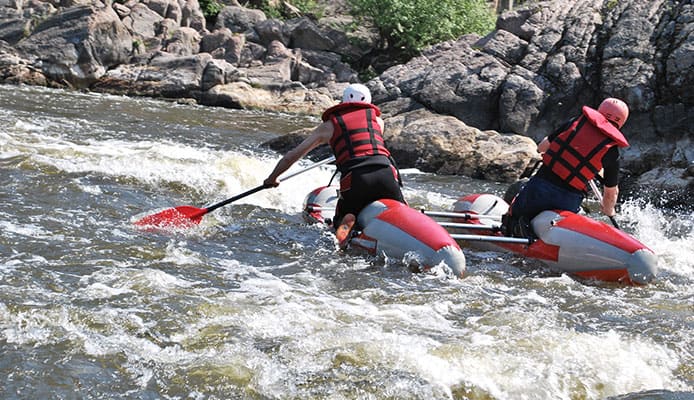
Q: What makes a wetsuit suitable for kayaking?
Two things are important when it comes to this – warmth and flexibility. The full suit you choose needs to be thick enough to keep you warm when water splashes on you. On the other hand, you need to be able to fully move your arms, because thick neoprene can really constrict movement.
That’s why the best kayaking wetsuits have thinner neoprene in the arm area, allowing you to paddle efficiently. Some styles (John for example) have bare arms with no sleeves allowing maximum movement. However, this is not the best solution if it’s very cold outside.
Q: Do I need to wear anything else with the wetsuit?
If you feel comfortable and warm in your full wetsuit you don’t need to wear anything underneath. However, you can have an additional layer of clothing. It will provide you more heat, but only if it’s made from the right materials. You shouldn't wear anything that holds in water, like cotton.
Your under layer should be made from polyester, neoprene, or other materials that make a good combination with the suit. Some people even like to wear rash guards underneath. However, keep in mind that wearing additional layers can limit your movement and be annoying.
Q: How does a wetsuit protect me?
The wetsuit gives your body insulation thanks to neoprene and the small bubbles inside. It gets wet and lets through a thin layer of water which gets trapped between the skin and the suit, and your body warms it up. No excess water is allowed in and the suit keeps the heat from leaving.
However, as we mentioned, your wetsuit has to be thick enough to prevent the body from cooling down. In very cold conditions you may need to wear boots and wear gloves or even a jacket with your suit for additional protection. If you want to go kayaking in freezing weather, then it’s a better option to choose one of the best kayaking wetsuits available on the market.
Globo Surf Overview
Choosing and buying the best kayak wetsuit can really improve your experience on water. It protects your body from the cold allowing you to fully enjoy yourself. But there are some differences between products, and you should always pay attention and buy a wetsuit for the circumstances you’ll be using it in. Be free to try a product from our wetsuit reviews, you won’t be disappointed. In any case, you now know what you need, so be safe and have a good time!
More Gear Kayak Reviews:
- Kayak Coolers
- Kayaking Gloves
- Kayak Helmets
- Drysuit Undergarments
- Kayak Paddles
- Kayak Compasses
- Kayak GPS
- Kayak Paddles For Beginners
More Wetsuits Reviews:
Have you tried one of the full wetsuits for kayaking that made it onto our list? Did it keep you warm? Was it comfortable? Please share your experience with us in the comment section below.


